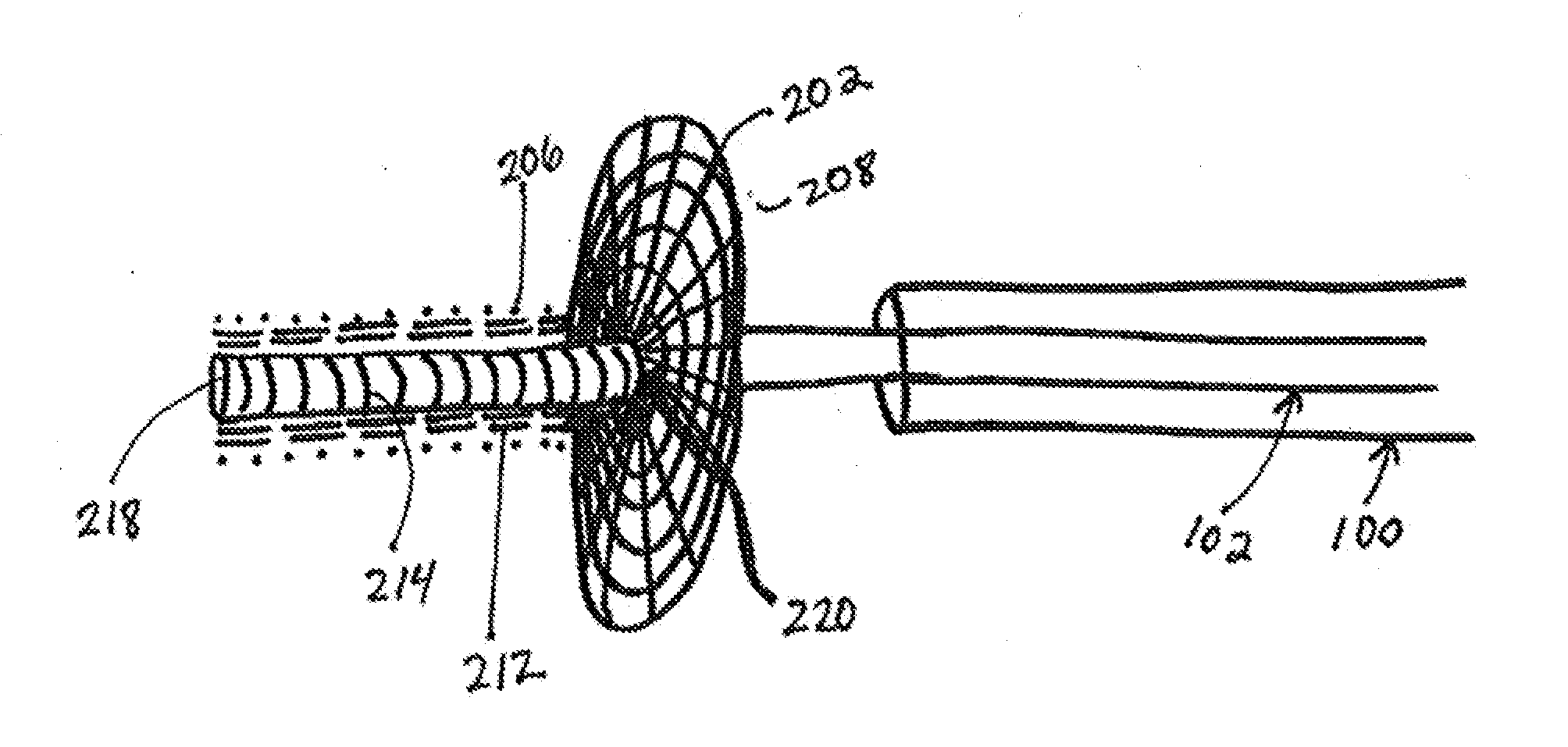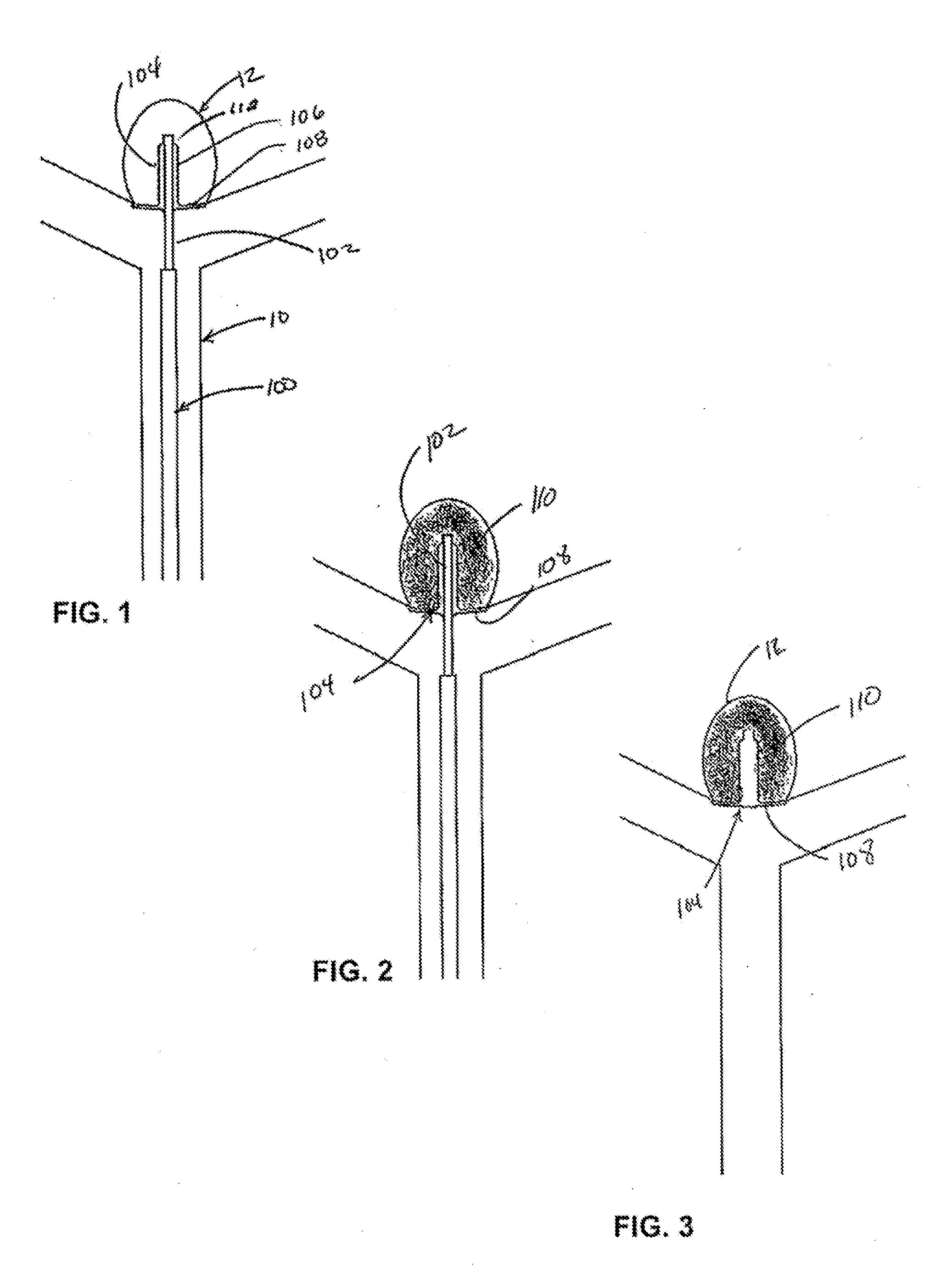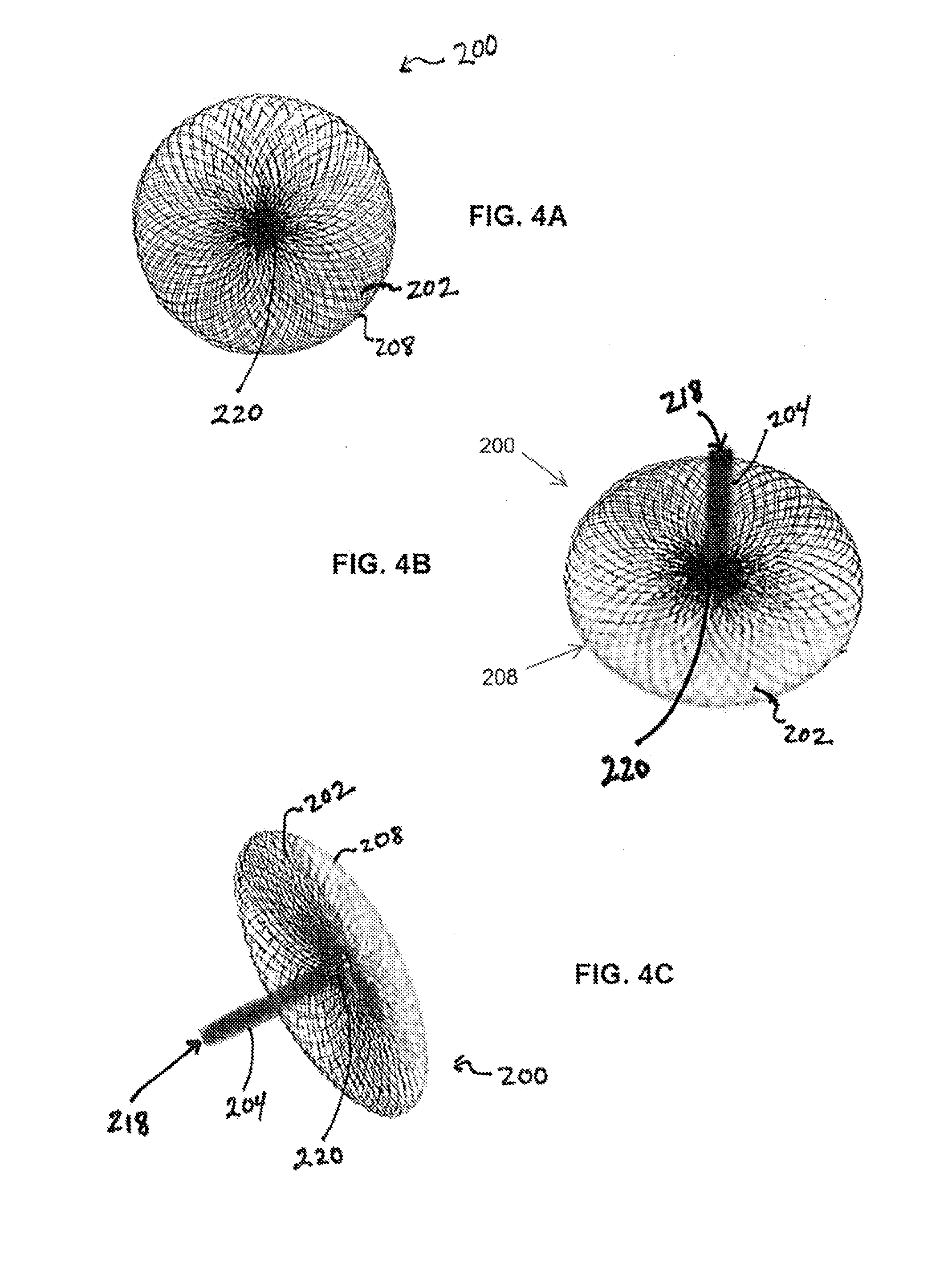Aneurysm cover device for embolic delivery and retention
an aneurysm and embolic technology, applied in wound clamps, medical science, surgery, etc., can solve the problems of wide neck, large terminal aneurysms, and inability to coordinate the use of embolic delivery, and the potential utility of an implant suitable for coordinated use with embolic delivery has not been appreciated
- Summary
- Abstract
- Description
- Claims
- Application Information
AI Technical Summary
Benefits of technology
Problems solved by technology
Method used
Image
Examples
Embodiment Construction
[0027]Turning now to FIG. 1 a catheter 100 is advanced within the vasculature 10 to the site of an aneurysm 12. Typically, a catheter or a microcatheter is initially steered into or adjacent to the entrance of an aneurysm, often aided by the use of a steerable guidewire. The wire is then withdrawn from the microcatheter lumen to allow delivery of the subject implant and / or system
[0028]A distal end of a core member 102 is located within the entrance of the aneurysm 12. The core member includes a lumen (not shown) and implant 104 (e.g. the combination of the braided shaft and braided cover) releasably set or mounted thereon. Naturally, delivery or guide catheter 100 can be positioned within the aneurysm 12 and then withdrawn while leaving the core member 102 and implant 104 within the aneurysm 12. Alternatively, the implant 104 and core member 102 can be advanced from catheter 100 into the aneurysm.
[0029]In variations where catheter 100 is retracted to expose the implant, the implant ...
PUM
 Login to View More
Login to View More Abstract
Description
Claims
Application Information
 Login to View More
Login to View More - R&D
- Intellectual Property
- Life Sciences
- Materials
- Tech Scout
- Unparalleled Data Quality
- Higher Quality Content
- 60% Fewer Hallucinations
Browse by: Latest US Patents, China's latest patents, Technical Efficacy Thesaurus, Application Domain, Technology Topic, Popular Technical Reports.
© 2025 PatSnap. All rights reserved.Legal|Privacy policy|Modern Slavery Act Transparency Statement|Sitemap|About US| Contact US: help@patsnap.com



